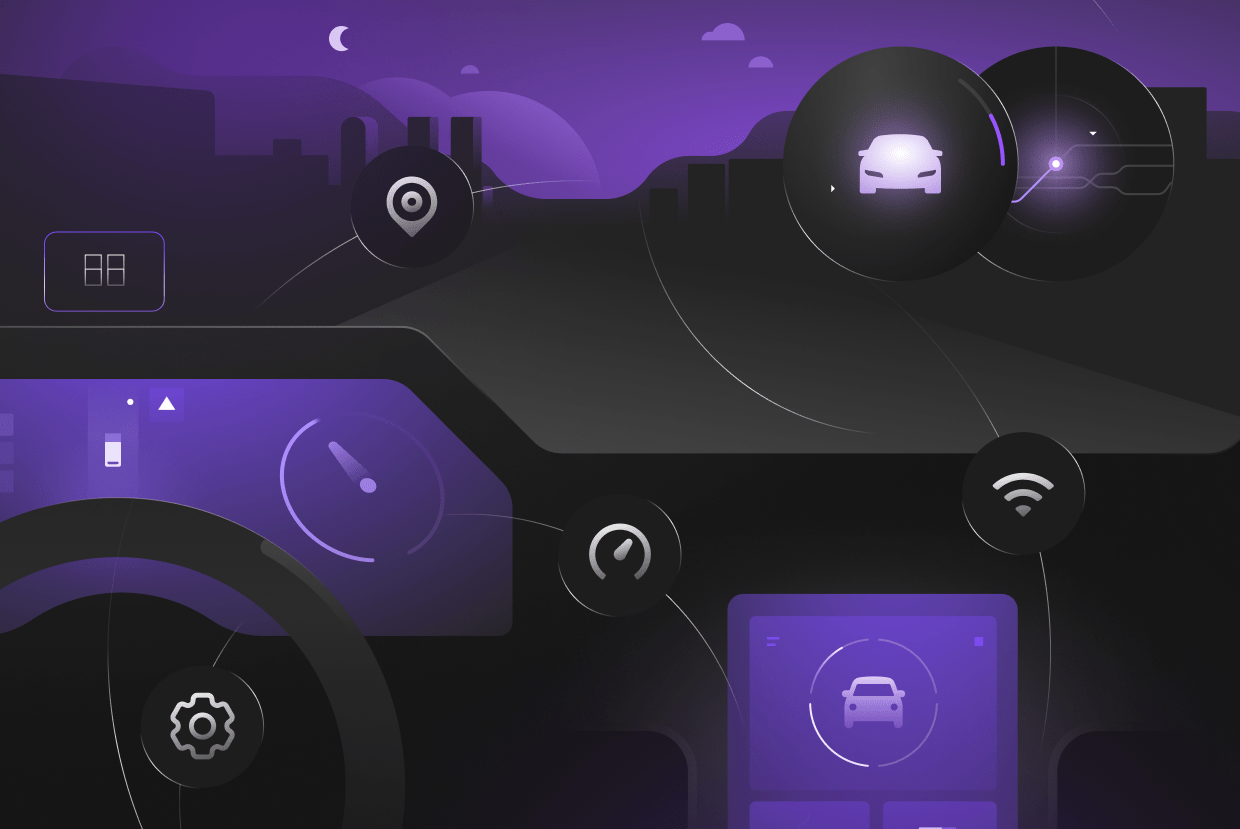Car manufacturers have a mandate to make vehicles safer while maintaining the enjoyment and convenience of personal transportation. Increasingly, you’ll find in-car companion apps that aim to make vehicles an extension of the driver through human-machine interfaces, or HMI. Whether for safety systems like ADAS features, entertainment systems like radio or streaming audio services, or for interacting outside of the vehicle through mapping, calls, or messaging, automotive HMI design requires a detailed, almost choreographed plan to bring a companion app from concept to implementation.
How do you take an idea through the HMI design process and put it into action? These are the steps in the concerted effort.
Understand the client’s needs
What does the client hope to solve with a companion app? Likely, there’s a monumental amount of data identifying pain points in the in-car experience for drivers from the client, and it needs to be parsed to determine which issues can be solved with an in-car companion app. In automotive, drivers generally have similar concerns across the market, but international car companies will need to look at differences between markets like those in Europe and the Americas. Companion apps could look different based on available networking, infrastructure, and tech, and solutions need to be identified and designed to accommodate a wide range of drivers.
Establish a framework
Once goals are determined, an HMI development team begins the arduous task of creating a wireframe for the technology. Every facet of the design is analyzed to determine weaknesses, areas for improvement, and the potential usability for the consumer. With the intent to make it easier and more convenient behind the wheel, the most direct and intuitive route to an action is sought.
Create a working model
With a framework in place, developers being creating the HMI technology, from the code to the hardware. Companion apps tie in several areas of in-car tech, so the HMI design process is intense and complex. This working model is created in conjunction between the carmaker’s engineers and a developer like the Star design services.
Many of the developments incorporate existing interfaces like Apple CarPlay and Android Auto, since their widespread adoption and familiarity make it more likely that drivers will relate with and use the tech.
Test HMI solutions thoroughly
For any product to succeed when it makes it to market, it must be free of flaws inasmuch as that’s possible. Thorough, rigorous testing attempts to expose any weaknesses in products, and that’s even more crucial for HMI solutions since it affects safe driving. Thousands of hours are dedicated to using the developments, ensuring it’s ready for the real world.
Analyze the results and tweak
Inevitably, there are adjustments required to a companion app. There could be issues with usability that need to be more intuitive or there could be security concerns that leave a connected vehicle open to being exploited. When a weakness is located, developers seek to close the gap, ensuring that it’s safe to use and enhances the user’s driving experience.
Implement the tech
From the concept to implementation, HMI design is fast-moving for solutions like companion apps. It needs to be one of the relevant automotive digital solutions that a consumer integrates into their drive thoughtlessly, which is the measure of its success. Even once the companion app is deployed, it’s constantly analyzed and improved as new features become available, keeping up to date.
Behind every automotive HMI for use in automotive applications, you’ll find countless hours of design and testing. It begins with understanding the problem that needs to be solved and culminates in an app that becomes the backbone of a driver’s interaction in their vehicle.













